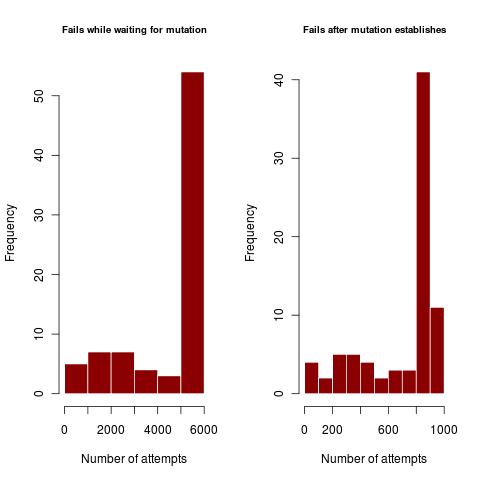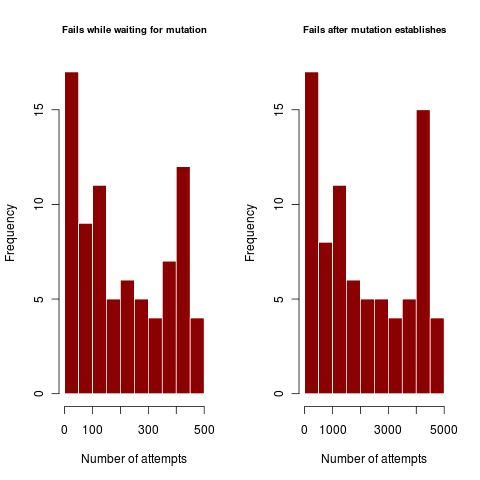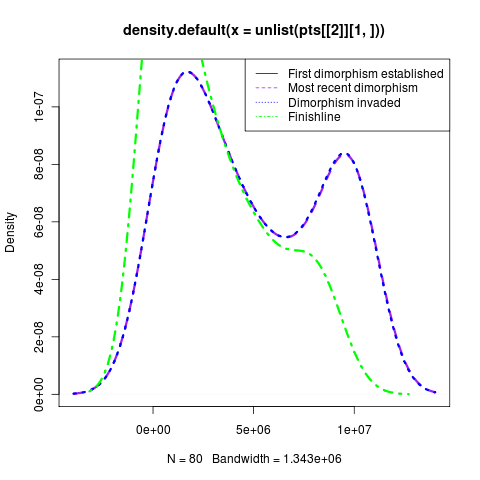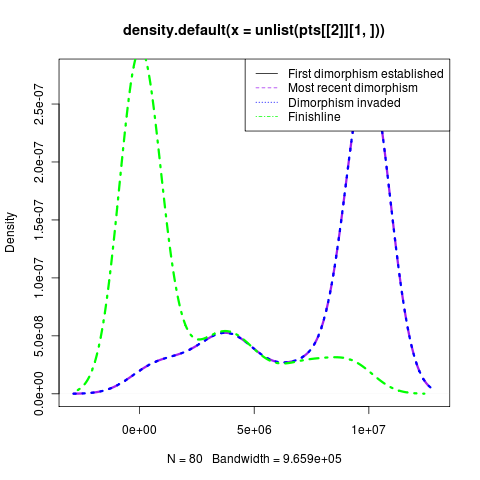Simulations completed, help accentuate the different paths for branching. When the most failures occur while waiting for the first mutation to enter first established dimorphism, mutation rate seems limiting (left):


(right) With a higher mutation rate, most collapses back to monomorphism occur after a mutation successfully invades in the dimorphic population. Unfortunately these runs result in large fraction of the ensemble never reaching the final branching, those that do, do so fast:


Note that 1e7 is the max running time. Running a set of new simulations well outside of the range where some will not complete in the max-time interval of 1e7. (commit, codes and more to specify parameters.) See flickr collection of today in adaptive dynamics for more, embedded below:
[flickr-gallery mode=“search” tags=“adaptivedynamics” min_upload_date=“2011-01-06 00:00:00” max_upload_date=“2011-01-07 00:00:00”]